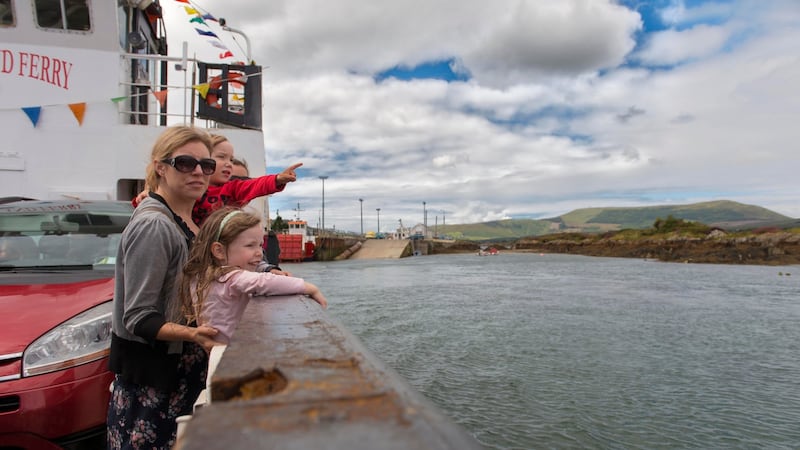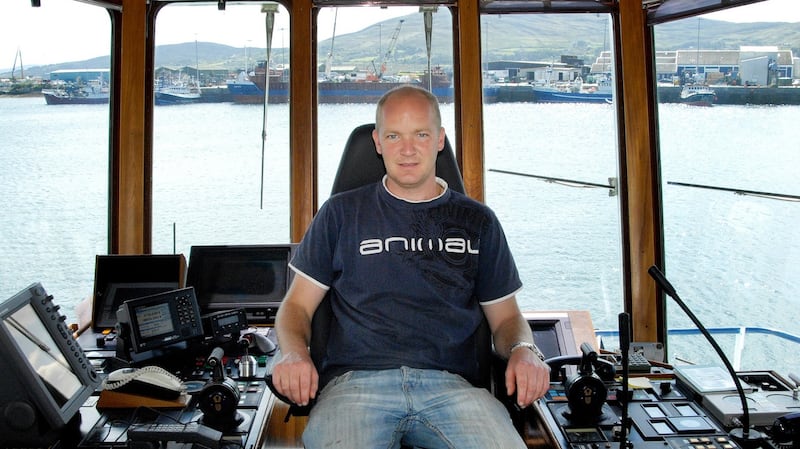Ger O'Sullivan's family has lived on Bere island off the coast of west Cork for more generations than he can count – yet the businessman has to go to Poland to find skilled workers for his award-winning boatyard.
Last year O’Sullivan invested €1 million in covering his state-of-the-art dry dock, on the 10km by 3km island, which sits less than two kilometres from Castletownbere on the mainland.
Roofing the dry dock was a major step forwards for the Bere Island Boatyard, which won Shipyard of the Year at the prestigious Marine Industry Awards in 2015. The boatyard carries out service and repair work on fishing and commercial vessels, including coating, painting, steelwork, hydraulics and engine repairs.
Covering the dry dock has taken the seasonality out of the work. “Prior to this we were completely weather-dependent,” O’Sullivan says. “Now we can work year-round without disruption from the weather. The fact that we have a covered-in dock also hugely expands the range of work we can do. We expect to double our workforce [from 14] in the next five years because of the covering-in of the dry dock.”
That’s the good news.
The bad news is that O'Sullivan, whose family has lived on the island for more generations than he can recall, has to go abroad for skilled shipyard workers because he can't find them in Ireland. "What we need is a shipyard apprenticeship scheme. As it stands there's no such thing," he says, adding that in the past he has found that if he hires Irish people, he has to train them himself.

"Going forward, it's really important for us to be able to employ local people, but we're finding that if we hire locally we have to train the people, so it's easier for us to go to Poland for skilled workers. We have people from all over Europe working with us, and the work involved is very diverse.
“We need people who understand what they’re doing – we’re responsible for the vessel we put out to sea. We need hands-on people who have training and have time served. There’s nothing in place at the moment to meet this demand – and there is a huge demand. An apprentice scheme is crucial to train people here. We’re happy to work with an apprenticeship scheme if the correct structures and supports are put in place.
“There are people on Bere island who could work with us, given the training, but we’re hiring foreigners, because they have the skills and the Irish people haven’t.”
Plan comes to fruition
The success of the Bere Island Boatyard is a source of satisfaction to the Bere Island Projects Group, which, along with Cork County Council and the Heritage Council, drew up a special conservation plan for Bere in 2003.
The report recommended the establishment of a range of marine businesses on the island. One of those to be established was the Bere Island Boatyard, says project development officer John Walsh, who also points to the establishment of a range of local companies that carry out a variety of work, from towage to installing marinas and pontoons, and offering vessel salvage and commercial diving services.
“These companies have created a large number of jobs and contributed significantly to the island economy, he says. “I think it brings a pride of place to the island, because all of these industries are extremely good at what they do.”
Poster boy
Award-winning Bere island entrepreneur Seán Harrington (32) is a poster boy for the island’s dynamic business population. It was his company, Atlantic Towage and Marine Ltd, that lifted Rescue Helicopter 116 from the sea under extremely difficult conditions in early April.
His firm has previously been involved in other major recovery operations, such as the Rambler 100 off the Fastnet in 2011 and the Astrid in Kinsale in 2013.
With eight full-time staff – the workforce rises to some 25 at peak periods – the company is thriving. “The business is doing very well. It’s a case of so far so good,” says the Bere island native, who won the Marine Industry Awards Future Achiever award in June – the same day his company also won the Marine Industry Ship Operator of the Year Award.

The firm also provides towage services to the oil terminal in Bantry Bay.
Harrington, who oversees the operations carried out by a fleet of eight tugs, workboats and crew-boats, has definite plans for the future. “I plan to grow the company from its current workforce of eight full-time workers and also to increase the size of our fleet.”
“It’s great working and living on the island,” says the father of three young children, who worked on his own father’s ferry for years before setting up his company.
He would like to see his children – aged nine, five and two – having the opportunity to live and work on Bere. “My family has lived on the island for generations. There’s a small community and everyone knows everyone. It’s a great place to raise a family.”










